Having some free time in the backyard can do your canine companion some good. Even the most pampered indoor pooch appreciates some untethered time outside. Dogs need a bit of freedom to exercise and play to their heart's content!
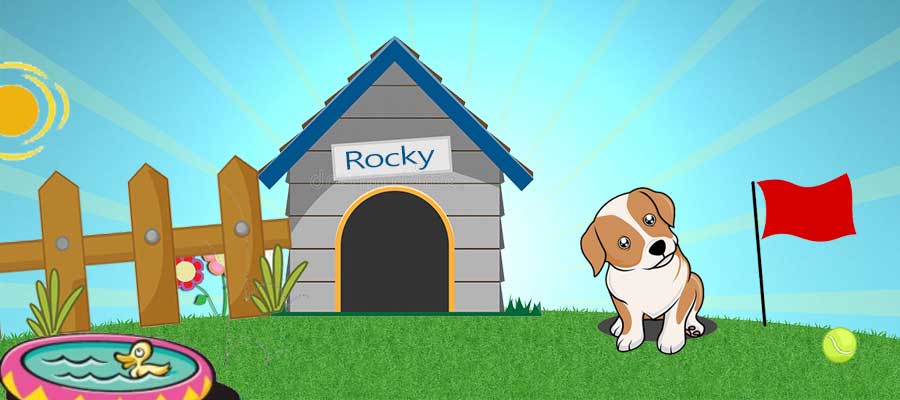
Contrary to popular belief, you don't need tons of empty space just for your dog. Many feel that you can either have a dog or a pristine backyard but not both. Well, we're here to tell you that it's possible to have your cake and eat it, too!
Whether you have a large backyard or a small garden area, there's no reason why your outdoor space can't efficiently serve both you and your furry friend. All it takes is a bit of careful planning.
Not sure where to start? We have you covered. Here's a guide to creating the ultimate dog-friendly backyard!
Pet-Friendly Landscaping
One of the biggest issues homeowners have with letting their dogs frolic in the backyard is the messy mess they leave behind. There's no way to prevent your dog from doing its business. But, there are some ways that you can prevent those messes from becoming too much to handle.
If you want to create an inviting outdoor space, the best thing you can do is pick up their waste and dispose of it properly. Sure, you can go the old-fashioned route with a doggy bag. However, more refined and mess-free alternatives exist.
Dog waste disposal systems act as mini septic tanks. Drop the waste inside, add a bit of activator, and the waste will absorb back into the earth. It keeps feces from stinking up your outdoor space.
Plus, those nutrients could end up improving the health of the soil and grass in the long-run!
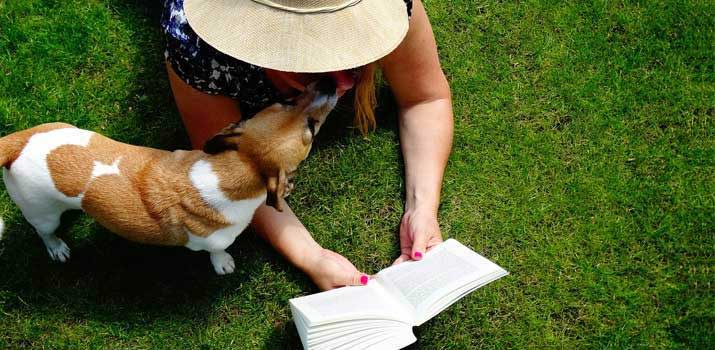
Speaking of grass, you may want to consider upgrading to artificial grass. Ever notice yellow stains developing on your grass after your dog does its thing? Dog urine and grass just don't mix! The high nitrogen content burns the grass, resulting in unsightly stains spotting your yard.
The best way to prevent all of that is to use artificial grass for dogs. Artificial grass does not react to urine in the same way as real grass. It's easy to maintain and feels like the real thing. Your dog will be none the wiser!
On top of all that, you can cut back on your ongoing yard maintenance costs!
Create a Dog Zone
Many dog owners like to create "dog zones" in their yards with clever landscaping. You can't always guarantee that your dog will relieve itself at the same spot every time. However, landscaping can encourage them to keep waste away from areas you want to enjoy with your family.
Hardscaping with rocks, large decking, and decorative borders do a fantastic job of telling your dog to, "Keep Off!" Throw in a little pheromone spray on those "dog zones" and your pooch will have a better idea of where to do their business.
Lawn Maintenance
Ever spot your dog chowing down on some grass? Don't worry! It's normal behavior. Many dogs eat grass. Sometimes, it's done to get some self-relief from stomach troubles. Other times, it's just for the fun of it! Either way, it's usually not a major cause for concern.
That is, however, unless you have a yard filled with chemicals!
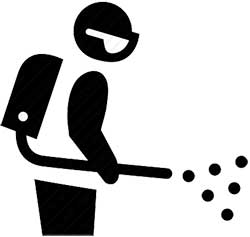
Pesticides and fertilizers are commonplace in the backyard. They do wonders to help us keep our yards looking healthy and staying pest-free. Unfortunately, those chemical treatments can do a number on your dog's health.
Consuming chemical-ridden grass poses some serious health concerns. So, you have to plan for that behavior.
Even if your dog isn't known to eat grass, they may try a sample at some point. Plus, their delicate paws can interact with the chemicals and experience burns.
It's best to lay off the fertilizers and pesticides. There are some great all-natural alternatives out there. They come with the same benefits but hold off on the unwanted side-effects!
You can also use careful landscaping to address any yard problems you might experience. Keeping your yard clean and debris-free may help to keep pests at bay. Meanwhile, regular watering and proper irrigation will prevent your grass from turning brown.
Any alternative to chemicals is a better choice than turning your backyard into a danger zone for your dog.
Containing Your Dog
The most important step in creating a dog-safe yard is to install some containment measures. Dogs are naturally curious creatures. During their daily "paw patrols," they can encounter an enticing smell or see something beyond the confines of your yard that draws them close.
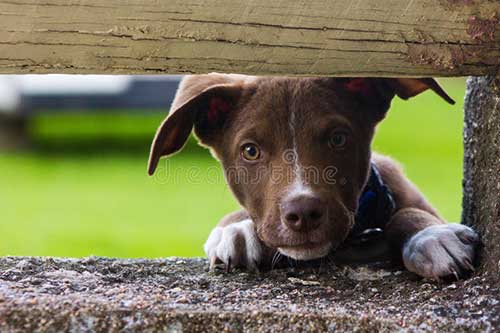
The last thing you want to deal with is a dog on the run! Not only does a lack of proper containment put your dog at risk, but you may also experience fines and trouble from neighbors.
Needless to say, avoiding all of that is a must.
The most obvious option is to install a fence. In most cases, a tall fence is more than enough to keep your dog within the boundaries of your yard.
Plus, it'll block their view to ensure that they don't get too excited by something they see and attempt to go through.
But, what if you have a super-determined dog or are unable to install one that's tall enough to keep your dog in?
Preventing Escape
In those cases, you're going to need to do a little extra work to stop your pup from going under or above your fence.
Many dogs are natural-born diggers. They do it for fun or to escape the summer heat, so burrowing a tunnel is no big deal to them! As a result, you'll have to learn how to stop your dog from digging under your fence.
There are plenty of great training techniques to put a stop to that behavior. However, you can also utilize deterrents or install physical barriers that complements your fence.
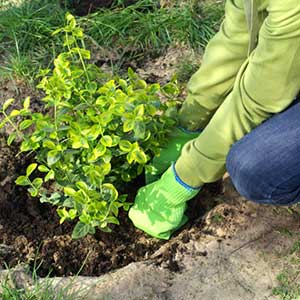
For example, planting shrubs around the fence line or installing landscaping rocks can do the trick. Some more permanent methods involving underground barriers are available, too.
Learning how to stop your dog from jumping the fence is important, too. Luckily, a lot of the same training and landscaping tactics apply for a jump-crazy dog!
Fence Alternatives
If you're unable to have a fence or want to take some extra precautions, there are some other containment options out there.
Wireless dog fences are a good deterrent that can keep your yard looking untouched. Whether you use a wireless unit or one that relies on buried borders, these devices act as training tools. They're a constant reminder that lets your dog know when they're straying too far.
Lastly, there are trusty dog tie-outs and stakes. Best for stubborn dogs, stakes give your dog a bit more freedom. But, they offer the same level of security as a leash!
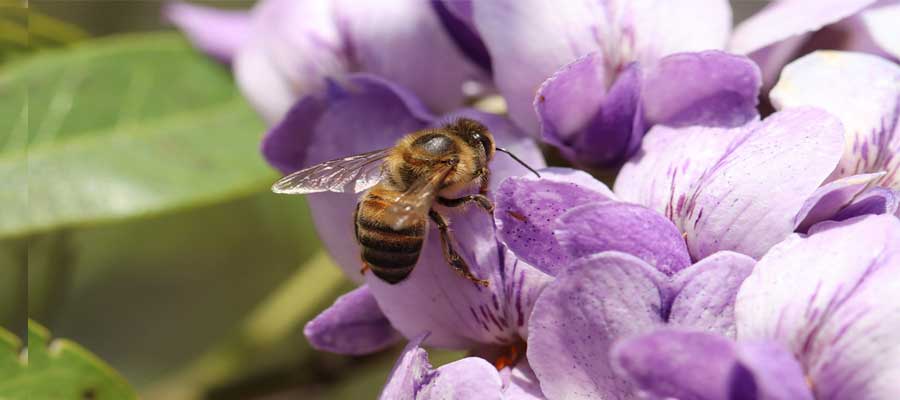
Hidden Dangers in the Backyard
It's not just chemicals you have to worry about! Your backyard is likely teeming with life. Unless you want to turn your garden into a concrete jungle, there's no way around that.
While all that lush life and natural landscaping are beautiful, there could be some hidden dangers for your dog lurking around every corner!
Insects
Believe it or not, there are tons of insects out there that will interact with your dog. All of the same pests that you have to deal with could cause some discomfort or pain for your dog.
The biggest dangers are ants, fleas, and bees. Ants can crawl all over your dog's body and cause itchy lesions. Oftentimes, they focus on the paws where they have easy access to the skin.
Get rid of any visible ant piles and do your best to prevent future infestations. That involves keeping your yard clean and free of any food.
Fleas are the most notorious canine pest. In most cases, fleas make their way to your yard through small fur-covered animals. Stray cats and squirrels are common carriers.
Once they get into your yard, they can live and breed in the grass until your dog comes by and becomes their new host. Treat your yard periodically to avoid flea infestations.
As for bee stings, the trick is to limit your dog's contact! Bees are beneficial to the garden. This is especially true if you have flowering plants. Consider keeping those plants in a raised planter or movable pot. You can also plan your garden beds to keep your dog away.
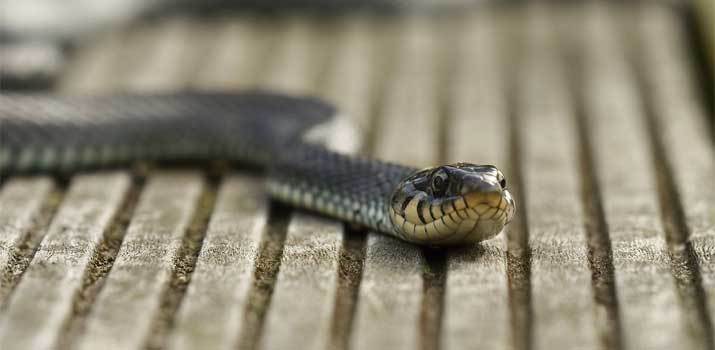
- Snakes and Small Animals
Snake bites are particularly dangerous for dogs. Canines don't know any better. They see something new and exciting, so they'll often gallop head-first towards a snake!
Needless to say, snake bites from venomous species like rattlesnakes, kingsnakes, cottonmouths, and copperheads are the biggest worry. If your dog gets bit by one of those, you need to act fast and provide care as soon as possible.
That said, non-venomous snakes can do damage, too. Bites are painful and can quickly lead to infection.
To prevent snakes from calling your backyard home, keep your yard clean. Snakes like to live in brush and dry debris. Keeping your yard well-maintained often forces snakes to look elsewhere to live.
- Toxic Plants
Finally, you need to think about toxic plants. Most don't realize this, but many common landscaping plants contain toxic flowers or berries.
Acorns and seed pods from oak trees and sweetgum trees cause serious digestive troubles if they are consumed by your dog.
The same goes for Sago palms, oleander flowers, wisteria, hydrangeas, and so much more! Do your research and keep any potentially poisonous plants away from your back yard!
Providing Shelter
No matter where you live, your dogs will need some shelter from the elements. For dogs that live outside, a high-quality dog house is a must. But even those that spend several hours outside will need some form of shelter, too.
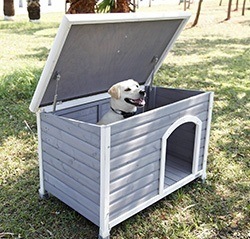
Large doghouses made of wood or metal are great for large breeds or multi-dog households. They provide plenty of room to lounge and get some shelter from the afternoon heat.
Smaller dogs can get by with pint-sized dog houses or temporary shelters that don't take up too much room. Set them up in the shade and your pooch will be good to go!
During the warmer months, your pup will need a home that's designed to provide good airflow and cooling capabilities.
Summer dog houses usually feature windows to improve air circulation, light-colored roofs to avoid heat-buildup, and raised floors.
Meanwhile, winter dog houses are the complete opposite. They are sporting thick, insulated walls that can block out the frigid cold. If your dog is staying outside during the winter, you also need to learn how to heat a dog house. Luckily, doing so is pretty easy with the right tools and know-how.
Don't make the mistake of thinking that your dog can do without proper shelter. Canines can get overheated very quickly in the summer and can suffer from hypothermia in the winter. A good doghouse or temporary shelter unit will provide all the protection they need.
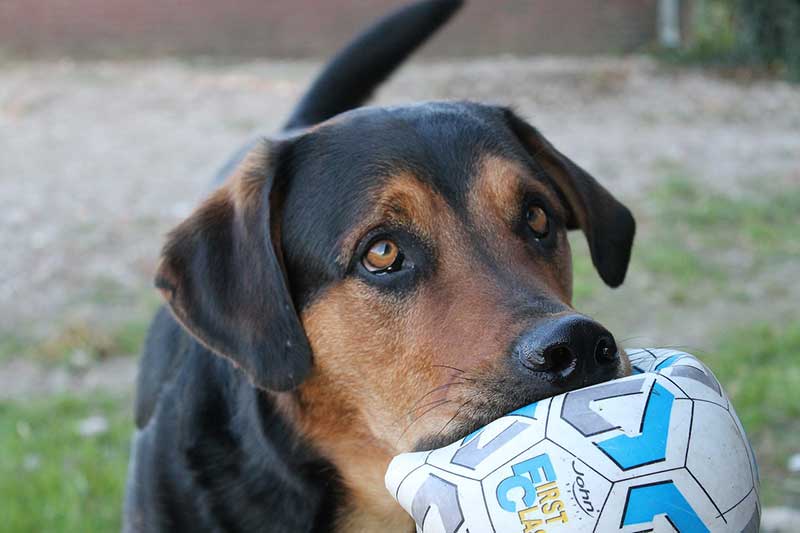
Dog-Approved Activities
Of course, you can't forget about the activities! Installing some fun activities for your dog to enjoy will make your backyard into the ultimate play space! They give your dog ways to stay entertained, helping you avoid any bad behaviors that could ruin your lawn!
To enjoy time with your dog, consider some exercise toys or obstacle course units! Something as simple as a ramp or tunnel is more than enough to suffice. You can teach your pooch some new skills while making sure that they get all the exercise they need.
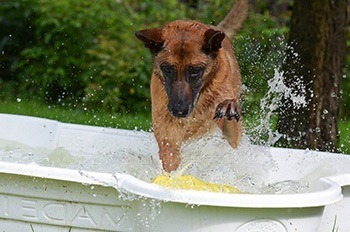
For those hot summer days, dog pools are a great option! There are many great dog pools on the market these days. From temporary pools that take minutes to set up to permanent in-ground models that provide years of fun,
a pool is a great way to help your furry friend cool off and have some fun!
If you want to give your dog a way to have fun on their own, automatic ball launchers are the way to go!
Set up the launcher to throw the ball across the yard safely! With some proper training, your dog will quickly learn how to relaunch the ball on its own. They stay happy and active while you can relax inside!
Conclusion
Dogs thrive when they can enjoy some time outside! Despite what you might have heard, you and your dog can coexist in the backyard. A bit of planning will ensure that it's a space that everyone in your family can enjoy!
Use these tips and turn your yard into the ultimate canine oasis. Take some time to make it safe and your dog will spend years enjoying the space with you.

